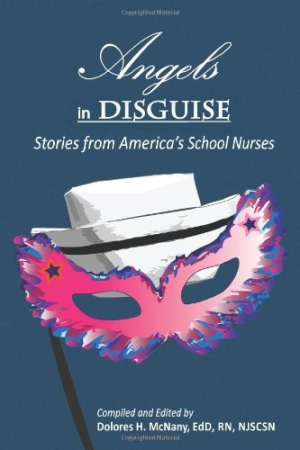Angels in Disguise
Stories from America's School Nurses
Editor Dolores H. McNany gathered fifty-nine letters from American school nurses. Many are unexpectedly moving and deeply revelatory about the very personal and professional reasons these (mostly) women chose their niche in nursing; some are far less interesting and border on the sentimental. In between are a clutch of average missives with fairly dry messages that are less than the “stories” which the subtitle suggests.
Angels in Disguise: Stories from America’s School Nurses does have merit, however, particularly for the reader who is not in school nursing or in elementary or secondary education. At times, the book doesn’t seem able to decide whether its target audience is the nursing community or anyone with even a passing interest in the subject.
The tone, depth, and level of sophistication vary greatly among the entries. Some letters are written with the assumption that the reader already knows a good deal about school nursing while other pieces attempt to explain the nuances and circumstances unique to the profession.
Only a few of the letters—and they are definitely more epistolary than essay-like—take a true narrative approach. These entries share moving stories about specific student-nurse interactions and are easily the most interesting in the collection.
In “Yes the Nurse is Here…You’re Looking at Him,” the lone male nurse represented, Robert D. Naugle, of South Carolina, tells stories around the jokes and humor that ease the discomfort some students and parents initially display when finding out their school nurse is a he. “Tell Me…I Can Take It,” a short dialogue-driven entry by Shirley Rodriguez of Arizona, tells of helping a student who swallowed a crayon.
Elizabeth Fitzpatrick, a nurse in the Columbine, Colorado, school district describes responding to the high school on the day of the student shooting, while Gloria Jean Reynolds of Illinois, tells of using her influence within the school community to make sure two indigent students get a key wardrobe item for graduation.
For the most part, however, many letters are merely a list of the things school nurses do—much of which goes far beyond the old and outdated idea of dispensing bandages, tissues, and hugs. Readers may be surprised to find that school nurses deal with, among many other difficult issues, teen pregnancy, substance abuse, the effects of parental discord, diabetes monitoring, obesity, and emotional, psychological, and eating disorders—all often with limited resources and respect.
Reviewed by
Lisa Romeo
Disclosure: This article is not an endorsement, but a review. The publisher of this book provided free copies of the book and paid a small fee to have their book reviewed by a professional reviewer. Foreword Reviews and Clarion Reviews make no guarantee that the publisher will receive a positive review. Foreword Magazine, Inc. is disclosing this in accordance with the Federal Trade Commission’s 16 CFR, Part 255.

